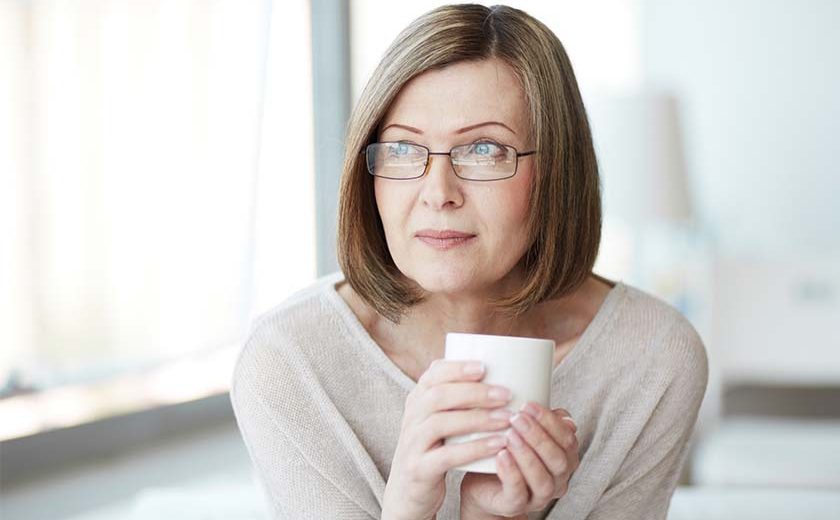The word ‘Osteoporosis’ literally means ‘porous bone’. It is a condition where a person gradually loses bone material so that his or her bones become gradually more fragile. As a result, they are more likely to break.
Bone is made of fibres of a material called collagen filled in with minerals – mainly calcium salts – rather like reinforced concrete. The bones of the skeleton have a thick outer shell or ‘cortex’, inside which there is a mesh work of ‘trabecular’ bone. Osteoporosis is a major public health concern worldwide. Although osteoporosis is more prevalent in women, it can also affect men. This disease can occur at any age and in any racial or ethnic group. However, it is more common in postmenopausal women, especially Asians and Caucasians.
In Malaysia, it is estimated that by year 2020, about 3.3 million Malaysians will be above 65 years of age. Urbanisation and extended life expectancy contribute to the increased incidence of osteoporosis. Hip fractures due to osteoporosis affected 88 men and 218 women per 100,000 in Malaysia. Of these patients, 63% were Chinese, 20% were Malays and 13% were Indians. No Malaysian data was available on the incidence of other types of fracture due to osteoporosis.
Risk Factor
All of us are at risk from osteoporosis as we get older, but there are some people who are more at risk than others. These are some of the factors which can make a difference:
1. Oestrogen deficiency
Woman who have had an early menopause (before the age of 45),of a hysterectomy (removal of the womb) where one or both ovaries have been removed are at risk.
2. Lack of exercise
Exercise keeps the bones strong – both as they are developing and throughout adulthood. So, anyone who does not exercise, or has an illness which makes it difficult for them to move about, will be more likely to develop osteoporosis. Women who sit for more than nine hours a day are 50% more likely to have a hip fracture than those who sit for less than six hours a day.
3. Poor diet
A diet that does not include enough calcium and vitamin D intake can encourage osteoporosis. Nutritional deficiencies, anorexia or bulimia are risk factors for osteoporosis.
4. Heavy smoking
Smoking increases the risk of osteoporotic fractures by up to 1.5 times. Smoking lowers BMD due to decreased calcium absorption. Cigarette smoking also increases the risk for osteoporosis by decreasing blood circulation to the bone. Tobacco also lowers estrogen levels in women.
5. Heavy drinking (alcohol)
A high alcohol intake reduces the ability of the body’s cells to make bone
6. Steroids (prednisolone)
If someone takes prednisolone over a long period of time, they can become osteoporotic. It has been estimated that 30% to 50% of patients taking long-term systemic steroids will eventually experience a fracture.
Other medications that can cause osteoporosis are anticonvulsant drugs (such as phenytoin, phenobarbitone, carbamazepine and primidone), heparin (a blood thinner) and medroxyprogesterone (the main ingredient of an injectable depot form for birth control).
7. Family history
Osteoporosis can run in families. This is probably because there is an inherited factor that affects the development of bones.Both men and women with a maternal family history of hip fractures have a greater risk for developing osteoporosis.
8. Previous fractures
People who have had a low trauma fracture are at greater risk of having another fracture.
How should this patient be evaluated?
Osteoporosis is diagnosed by measuring bone mass, usually with the dual energy x-ray absorptiometry (DXA) scan. A T-score (which compares your bone mass to that of a young adult) of -2.5 or lower is diagnostic of osteoporosis. A T-score of -1 to -2.5 is considered osteopenia, a low bone mass condition that hasn’t progressed to osteoporosis. A T-score higher than -1.0 is considered normal.As the T-score falls below -2.5, the fracture risk increases exponentially.
Natural treatments for osteoporosis and osteopenia include the following:
Physical activity – In addition to osteoporosis, physical inactivity tends to cause weight gain, heart disease, diabetes, and a host of other chronic diseases. The minimum guideline for physical activity is 30 minutes daily of moderate intensity exercise. Optimal is 45-60 minutes per day.
Vitamin D – Vitamin D influences how much calcium is absorbed in the intestines and has been found to be a better predictor of osteoporosis risk than calcium intake in many studies. The RDA for vitamin D is 600 IU per day, but I recommend 2000-4000 IU daily for most people. Those with osteopenia or osteoporosis may need more and should have their blood levels of vitamin D checked annually.
Vitamin K – There are different forms of vitamin K including K1 and K2. The best evidence for osteoporosis is with the K2 form. A recent meta-analysis, which pooled the results from 13 trials on vitamin K2 found a dramatic 77%, 60%, and 81% reduction in fracture risk (hip, spine, and non-vertebral fractures, respectively).
Calcium – Taking extra calcium won’t help if you are already getting enough, but it may if you are deficient. The RDA for most adults is 1000 mg/day (women over 50 and men over 70 should get 1200 mg/day). I will suggest calcium derived from milk which elements needed for optimal bone health like magnesium, phosphorus, sodium and potassium.
Reduce alcohol – While alcohol in moderation may lower the risk of heart attack and stroke, alcohol in excess can promote osteoporosis. In general, men should limit alcohol to 2 drinks per day or less and women to 1 per day or less. Those with osteopenia or osteoporosis may benefit from further reductions.
Stop smoking – In addition to osteoporosis, tobacco raises the risk of heart attack, stroke, cancer, and other diseases.
Hormone Replacement Therapy (HRT) – HRT does have potential risks, including an increased risk of heart attack, stroke, and breast cancer. Natural/bio-identical forms of HRT may have less risk and can be an option for those with a high risk for osteoporosis and a low risk of breast cancer and cardiovascular disease.
For those who don’t have osteoporosis or osteopenia but want to prevent it, it is important to address as many of the modifiable risk factors listed above as possible.
The Osteoporosis Diet Foods to Include
Raw cultured dairy – Kefir, yogurt, and raw cheese contain calcium, magnesium, vitamin K, phosphorus, and vitamin D rich foods all of which are vital for building strong bones.
Wild-caught fish – Osteoporosis may be related to chronic inflammation. Omega-3 fats help reduce inflammation.
Sea vegetables – These vegetables are high in critical minerals for bone formation and calcium. Try to include nori, wakame, agar, or kombu in your diet.
Green leafy vegetables – Bones need Vitamin K and calcium to stay strong and green leafy vegetables are full of these.
Alkaline foods – Osteoporosis may be related to an acidic body environment, so eat plenty of fruits and vegetables in order to promote a more alkaline environment.
Foods That Cause Osteoporosis
Alcohol – Increases inflammation that can lead to more calcium being leached from bones.
Sweetened beverages – The high phosphorus content found in soda can remove calcium from bones. Sugar also increases inflammation.
Sugar – Increases inflammation which can make osteoporosis worse.
Processed, red meat – A high intake of sodium and red meat may result in bone loss.
Caffeine – Excessive caffeine intake can result in bone loss.
 Esther is a UK registered Naturopath and Nutritional Therapist. She also holds a doctorate in Natural Health. Esther is a member of British Association for Applied Nutrition and Nutritional Therapy (BANT) UK, Federal Nutrition Therapy Practitioner (FNTP), UK and Member of The Association of Nutritional Medicine Practitioners, Malaysia (ANMP). Presently, Esther is the President of Naturopathic Medical Association Malaysia which is recognised by the Ministry of Health in Malaysia.
Esther is a UK registered Naturopath and Nutritional Therapist. She also holds a doctorate in Natural Health. Esther is a member of British Association for Applied Nutrition and Nutritional Therapy (BANT) UK, Federal Nutrition Therapy Practitioner (FNTP), UK and Member of The Association of Nutritional Medicine Practitioners, Malaysia (ANMP). Presently, Esther is the President of Naturopathic Medical Association Malaysia which is recognised by the Ministry of Health in Malaysia.


